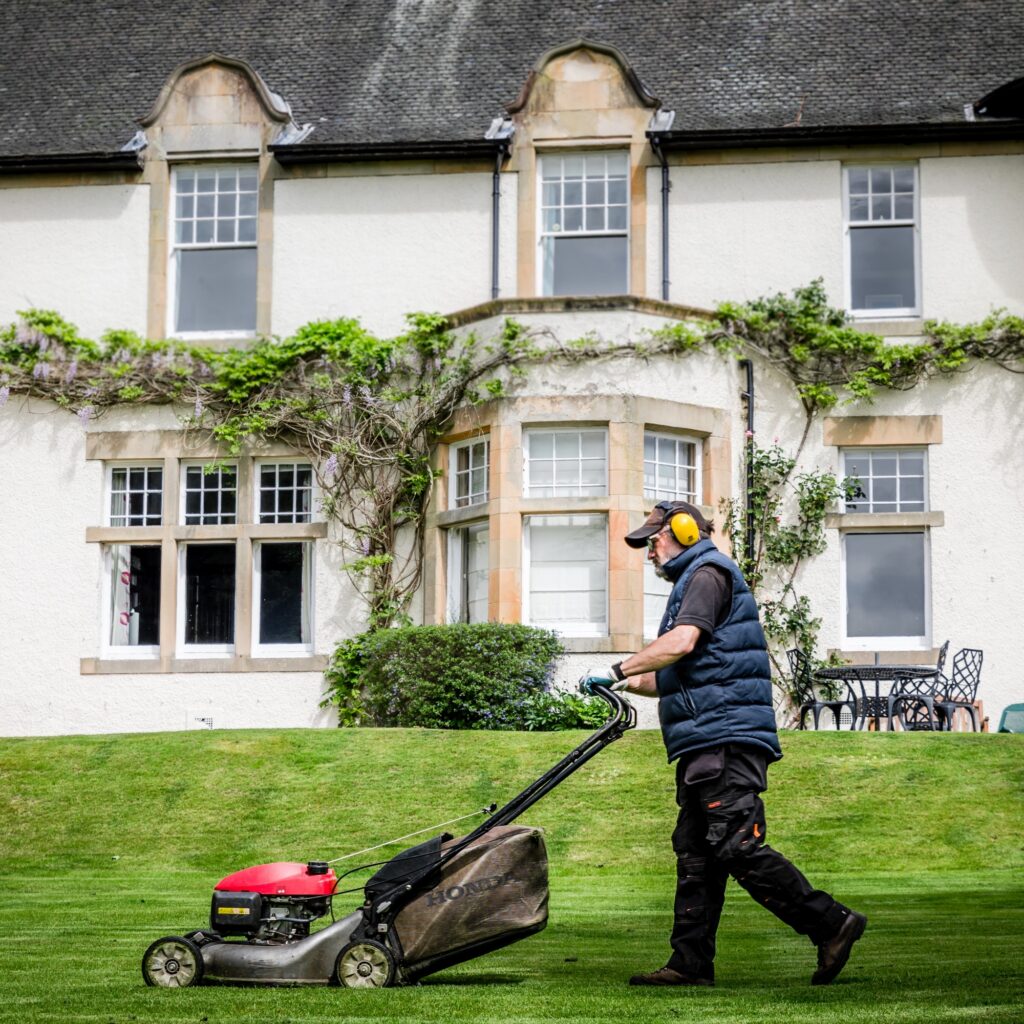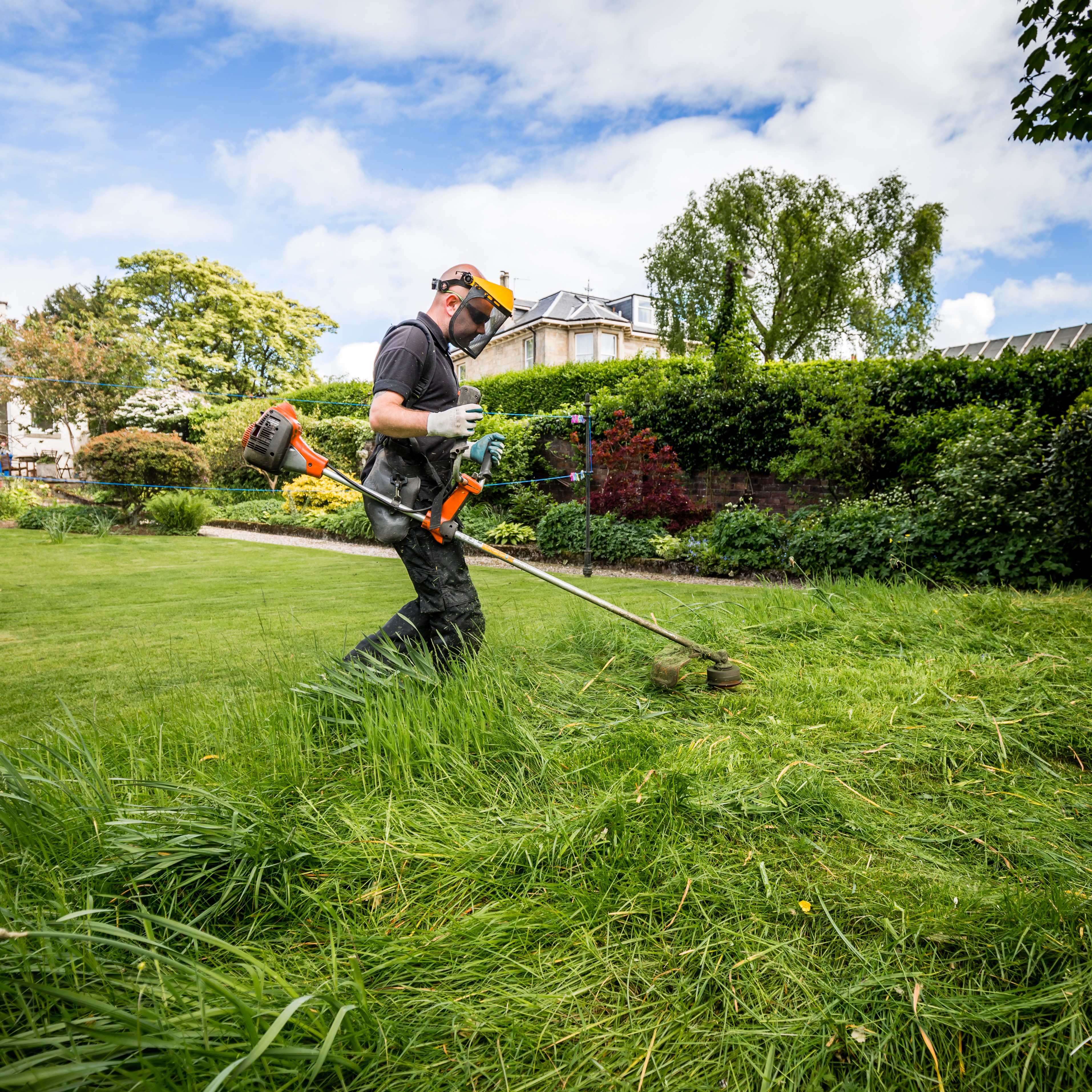While hot weather is wonderful for humans, it may be problematic for grass. While grass and grass seed are extremely tough, frost hardy, tolerant of tight mowing, and sturdy enough to walk on while still looking nice year-round, they do require a little extra care during this time to help their water levels. Droughts can result from extended periods of dry weather.

This article will provide you with professional guidance on how to take care of a drought and maintain your grass over the summer.
Grass is remarkably tough. No other plant comes to mind that we demand (and receive) as much from. Could you make the same claim about vegetable or flower plants?
Given that your grass does all of those tasks while also removing greenhouse gases and giving you oxygen, it only seems fair to care for it in return.
Your grass will experience a lot of stress throughout the summer. Transpiration is the mechanism by which the leaves of the plant will lose water. Transpiration is good for people since it keeps a lawn made of real grass cool to sit on and makes a garden with a lawn covered in lush greenery feel incredibly refreshing on a hot day.
Although it does include water evaporating from the leaves, transpiration cools the plant. That’s okay as long as the plant can replenish the water lost by absorbing more through its roots. The plant switches to survival mode when the soil becomes extremely dry because it is unable to rehydrate itself.
You’ll need to step in at this point to save your grass and keep it alive through the drought.
Dealing with drought and lawns
Your lawn will go into survival mode when the soil and water supply run out. The roots, where the temperature is cooler underground and there are no drying winds, will transport and store whatever water and nutrients being held in the leaves. This implies that in hot weather, your lawn will turn brown, straw-like, and dry instead of being green and having a nice texture.
Lawn in arid conditions
Different grass species frequently respond to drought in slightly different ways. The deeper-rooting ryegrasses tend to turn brown later than fescue and bent grasses. Also appearing to be doing well is the clover in the foreground. Many of your lawn’s hidden secrets will come to light in dry weather!
This implies that during hot weather, your lawn will lose its gorgeous green colour and texture and turn brown, straw-like, and, well, parched.
You now have a choice between two options. Either water your lawn or adjust your lawn-care schedule in accordance with the seasons.
I won’t even talk about the first option. Water is a limited resource, making it harder for water corporations to keep up with the task of cleaning and delivering our water as the population of the UK grows. For health, hygiene, and food production in a drought, mains water should be used. Lawns are lovely, and I adore them, but I know that a brown lawn will turn green after a rain, so I’m keeping my mains water for my daily cup of coffee.
In the summer, I won’t water my grass.
All that is left is plan B.
How to take care of your lawn in hot weather or a drought
- Avoid walking on the grass as much as you can
- Remove furniture, rugs, and toys from the grass.
- Your lawnmower’s blades should be raised.
- Allow the lawn clippings to re-enter the sward.
- Don’t treat your lawn while there is a drought.
- Continue to feed the grass during a wet summer.
- Plan your autumn lawn improvements to help your lawn recover from the summer’s heat.

Avoid walking on the grass as much as you can
Although I understand it’s not always practical, if you can lessen the stress (wear and tear) on your grass, please do.
Toys and furniture shouldn’t be left on the lawn for longer than 48 hours.
Shift things around. Encourage kids and pets to relax and take in the scenery rather than racing about. Additionally, try to take a different path every time you go to the shed, chicken run, or washing line if you have to cross the lawn to get there.
Give the grass a little extra time to grow.
Most likely, you won’t need to cut the lawn. However, if you do, make sure the mower blades are as sharp and high as possible. Longer grass provides shade to the soil below and reduces moisture loss. It produces a microclimate that resembles a tiny jungle.
Allow the trimmings to fall back into the sward.
Similar to the layer of bark chips you apply beneath shrubs to retain soil moisture, they’ll form a little mulch.
In a drought, postpone all grass treatments.
During this time, avoid using weed killer or lawn fertiliser. Until it has rained enough to restore the grass to green, at least. Fertilizer is essential for the plant’s mechanisms for controlling moisture, but it should only be applied while the soil’s moisture content is still sufficient. It is useless to fertilise a dry grass if your soil is absolutely dry.
Apply a spring-summer lawn feed if it does rain to help your lawn develop the root system it needs to survive the hot season.
In case of rain, top up your grass feed.
To help your lawn develop the root system it needs to survive the hot weather, apply a spring-summer lawn feed.
Get ready for autumn.
Plan your autumn renovations once it has rained and your yard is lush. Your lawn’s soil will be improved by aeration, scarification, and topdressing, allowing it to hold water for longer the next time there is a drought.
Maintaining newly installed turf during a drought
Because it lacks a root structure strong enough to maintain the plants’ survival mode, freshly new turf requires far more care than an established lawn.
Please wait to turf till the drought is over if you can. If not, you must be extremely careful not to overwater.
If it’s imperative that you install your new lawn in warm weather, amend the soil before laying the turf with some water-retentive gel crystals. It will assist you in ensuring that the least amount of water is wasted to evaporation.
If necessary, drink water in the early morning and late at night. Water has a better chance of settling into the soil when the sun is lower in the sky rather than evaporating away under the heat of the sun.
Speak to local water authority to find out if hosepipes are permitted in your area. You might be eligible for a brief exemption. If not, using a watering can to irrigate your new lawn can give you plenty of exercise!
Grassgo Gardeners
Here at GrassGo Gardeners we can do all of the hard work for you why not contact us at https://grassgo.co.uk/ or call us on 0141 40 40 434 for all your Gardening needs.
